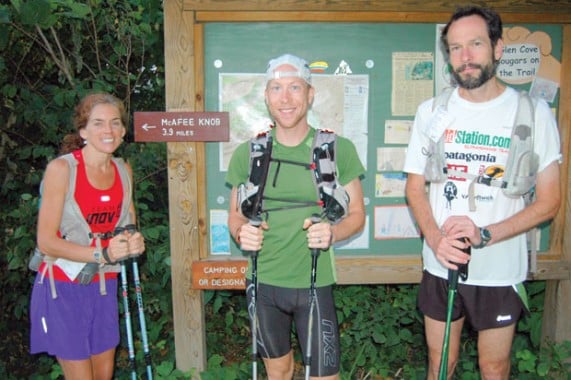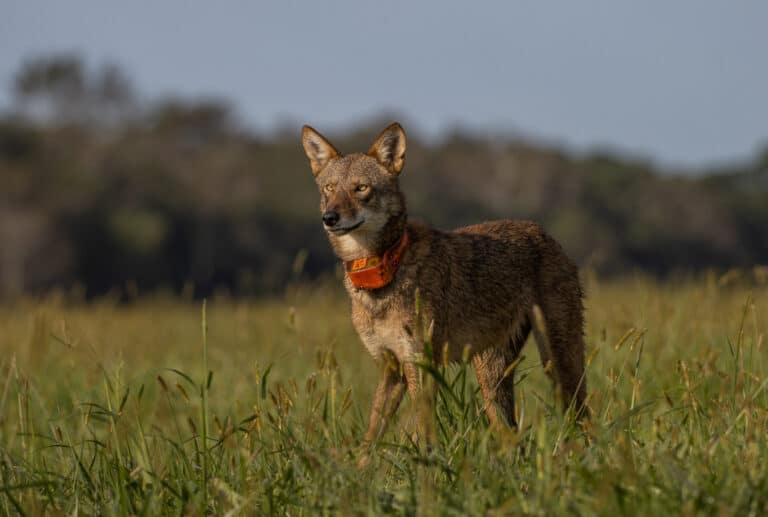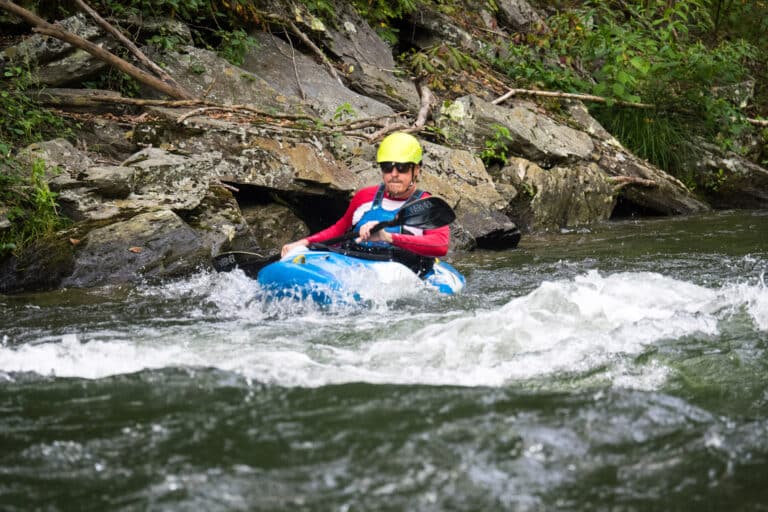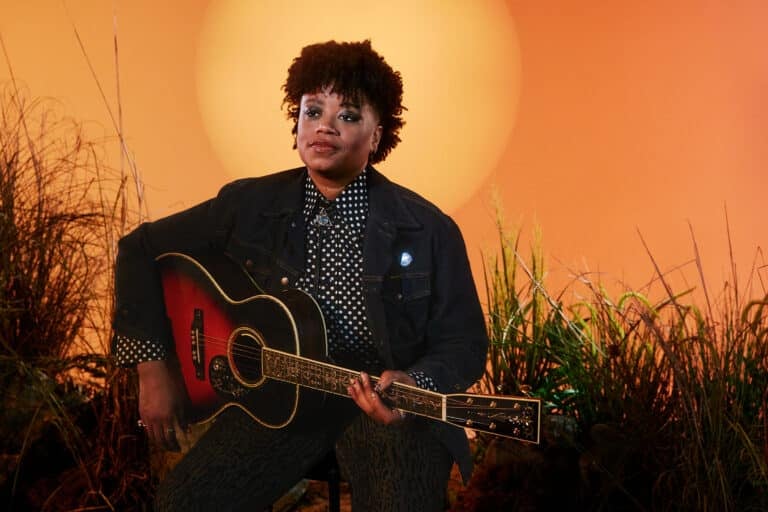Anne Lundblad, Troy Shellhamer, and Eric Grossman stop at McAfee Knob on their way from Damascus, Va., to Harpers Ferry, W.Va.
Surviving the Roller Coaster, Trail runners trek 500 miles across Virginia.
I paused at the base of the roller coaster. Troy was reading, with relish, the warning sign posted there. It concludes with “we’ll see you at the end, if you survive.” The sign didn’t refer to an amusement park ride, but to a section of hiking trail with several large and unrelenting climbs and descents. I bounded jauntily past.
We had survived to reach the fourteenth and final stage of the Tour of Virginia—a 550-mile run across the commonwealth on the Appalachian Trail. We had started near Damascus and headed northward through Virginia, and now we were making our final push to Harper’s Ferry, W.Va. When I awoke that morning I wasn’t sure that my ankle would take any weight, but with the benefit of a roll of tape and several hundred milligrams of ibuprofen, I knew now that no roller coaster could stop me from reaching our final goal. I ran that and the next three big climbs. Despite averaging forty miles per day on difficult terrain made more treacherous by the heat and storms of summer, I was racing the last 50 kilometers like a stand-alone event.
Many variables intervene during any one 40-mile day of trekking in the mountains. I proposed to stack 14 such days in a row. Although I have thru-hiked the A.T. and completed about 60 ultramarathons, I put my own chances of getting a tour-ending injury at 20 percent. It would not have been too surprising if no one was able to complete
the tour.
We were all challenged early and often. Oppressive heat and humidity struck just as the tour began. Even in the middle of the night, lying still and bare-skinned outside, I’d wake up uncomfortably hot. Within each stage we were all expected to be self-sufficient. That meant that, along with safety gear, we had to carry a minimum of 1500 calories and a means of collecting, treating, and transporting three liters of water. In the heat of the day, each of us went through about a liter an hour, so that meant several stops at springs or streams, many of those at some distance from the trail. Anne Lundblad, Troy Shellhamer, and I scooped water into our hydration bladders, threw in a dash of Miox-blasted purification, and headed down the trail while any critters in the water were killed before drinking again.
The storms generated by all that heat took out many trees that seemed disproportionately spread across the A.T. We did a lot of scrambling through recent blowdowns. Several times we had difficulty picking the trail back up on the far side of the downed trees. Managing the terrain proved more difficult than I expected. With the fatigue, long days in the heat, rocks, roots, and limbs, I must have lost some equilibrium. I fell five times—hard, bruise-inducing falls. At 6’2” I know better, and so I exercise caution and generally fall no more than once a year.
Troy is not as tall, and not as old as me, and although he only fell one time, it was harder and more destructive than all my falls combined. Early in stage eight, he tore a long gash across one hand and severely bruised the other. In one of many strokes of good fortune, a scant 200 meters after falling, Troy crossed a road at which six nurses were taking a break from their own hike. They treated him and sent him on his way in short order. The gash would certainly have warranted stitches, but Troy was determined to continue the tour uninterrupted. He would superglue the wound himself that night. Needless to say, he had to get along without his trekking poles for the remainder of the tour and somehow manage not to fall again.
Anne suffered the most. She developed severe blisters during stage one and then added other blisters throughout. She fell thirteen times on swollen and battered knees. She started her days earlier and ended them later than Troy and me – and still got herself packed for the next day before we did. She was exceptionally methodical in preparing for and managing each stage. I finished many stages grumbling and ill-tempered, while Anne remained consistently pleasant and optimistic. I know she had low points during the day, but when I saw her in the evenings, she was always smiling.
The tour was ultimately a test of survival. The A.T. is about as wild as we can readily get: each of us spent most of our days completely immersed in the lushness of blossoming azaleas and the musk of large mammals.
We gathered at the Appalachian Trail Conservancy headquarters in Harper’s Ferry as we finished that final stage. Our communal sense of accomplishment was quiet and deep. We lingered in town for the rest of the evening and overnight before sharing a small ceremony the next morning, silently relishing the raw beauty that had sustained us. •








